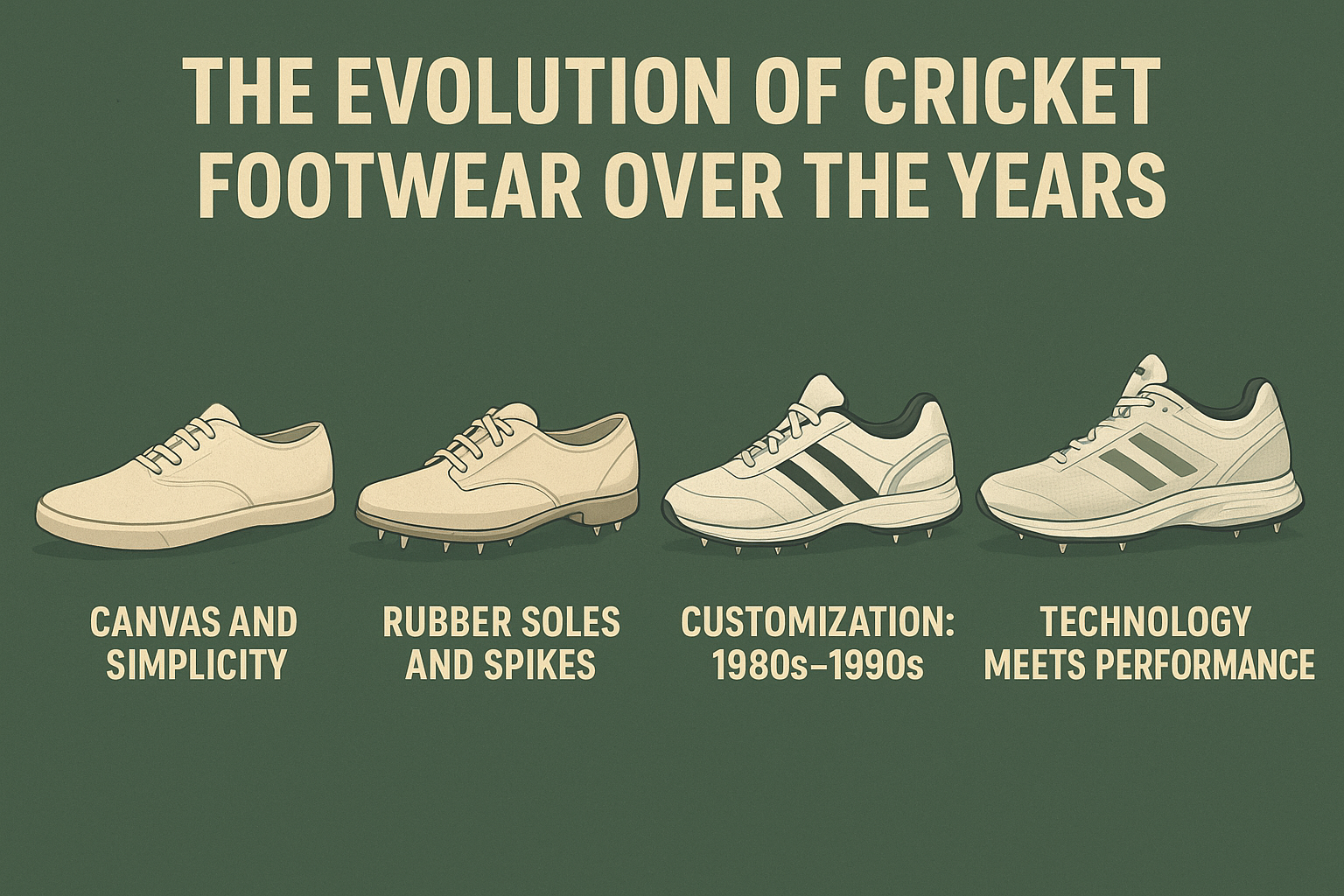Cricket has always been a game of precision, endurance, and balance. But while bats, helmets, and gloves often get the spotlight, there’s one piece of gear that’s undergone a quiet revolution — cricket footwear. From simple canvas shoes to high-tech performance models, the evolution of cricket footwear tells the story of how technology and design have transformed the game we love.
1. The Early Days: Canvas and Simplicity
In the early 1900s, cricketers played in basic white canvas shoes with minimal padding and flat soles. There was no focus on performance or support — they were simply designed to meet dress codes rather than enhance play. These shoes offered little traction, making it tough for bowlers and batsmen to maintain stability on grassy pitches.
2. The Rise of Rubber Soles and Spikes
By the mid-20th century, manufacturers began adding rubber soles and metal spikes for better grip. Fast bowlers, in particular, benefitted from the improved traction, allowing them to generate more pace and stability during their run-up. This was also the time when footwear began to differ by player role — with spiked shoes for bowlers and rubber-studded versions for fielders.
3. The Era of Customization: 1980s–1990s
As professional cricket grew, so did the need for customized performance gear. Companies like Adidas, Puma, and Kookaburra introduced lightweight materials and ankle support designs. The introduction of air cushioning and reinforced toe protection brought a new level of comfort and safety.
Players like Sachin Tendulkar and Ricky Ponting began sporting customized shoes designed for their foot shape and playing style — signaling the beginning of the performance footwear age.
4. The Modern Makeover: Technology Meets Performance
In the 2000s and beyond, cricket shoes became a fusion of science and sport. Modern designs use advanced foams, breathable mesh fabrics, and ergonomic midsoles for maximum comfort and responsiveness.
Today’s models — from brands like SG, SS, and New Balance — feature:
-
Lightweight yet durable materials
-
Strategic cushioning for shock absorption
-
Hybrid sole options (rubber + spikes) for versatile performance
-
Anti-slip traction for multi-surface play
The focus isn’t just on looks — it’s about optimizing every movement on the field.
5. The Future: Smart and Sustainable Footwear
The next wave of cricket footwear is already taking shape. Expect to see:
-
Smart sensors to track foot movement and fatigue levels
-
Eco-friendly materials like recycled rubber and vegan leather
-
3D printed soles customized to a player’s biomechanics
The evolution of cricket shoes is moving towards personalization, performance, and sustainability — giving cricketers of all levels the tools to play better and play longer.
Final Thoughts
From canvas simplicity to tech-driven innovation, cricket footwear has come a long way. What was once an afterthought is now a critical piece of performance gear. Whether you’re bowling thunderbolts, chasing a boundary, or building a marathon innings, the right pair of shoes can make all the difference.
So the next time you lace up, remember — you’re stepping into over a century of cricketing evolution.
